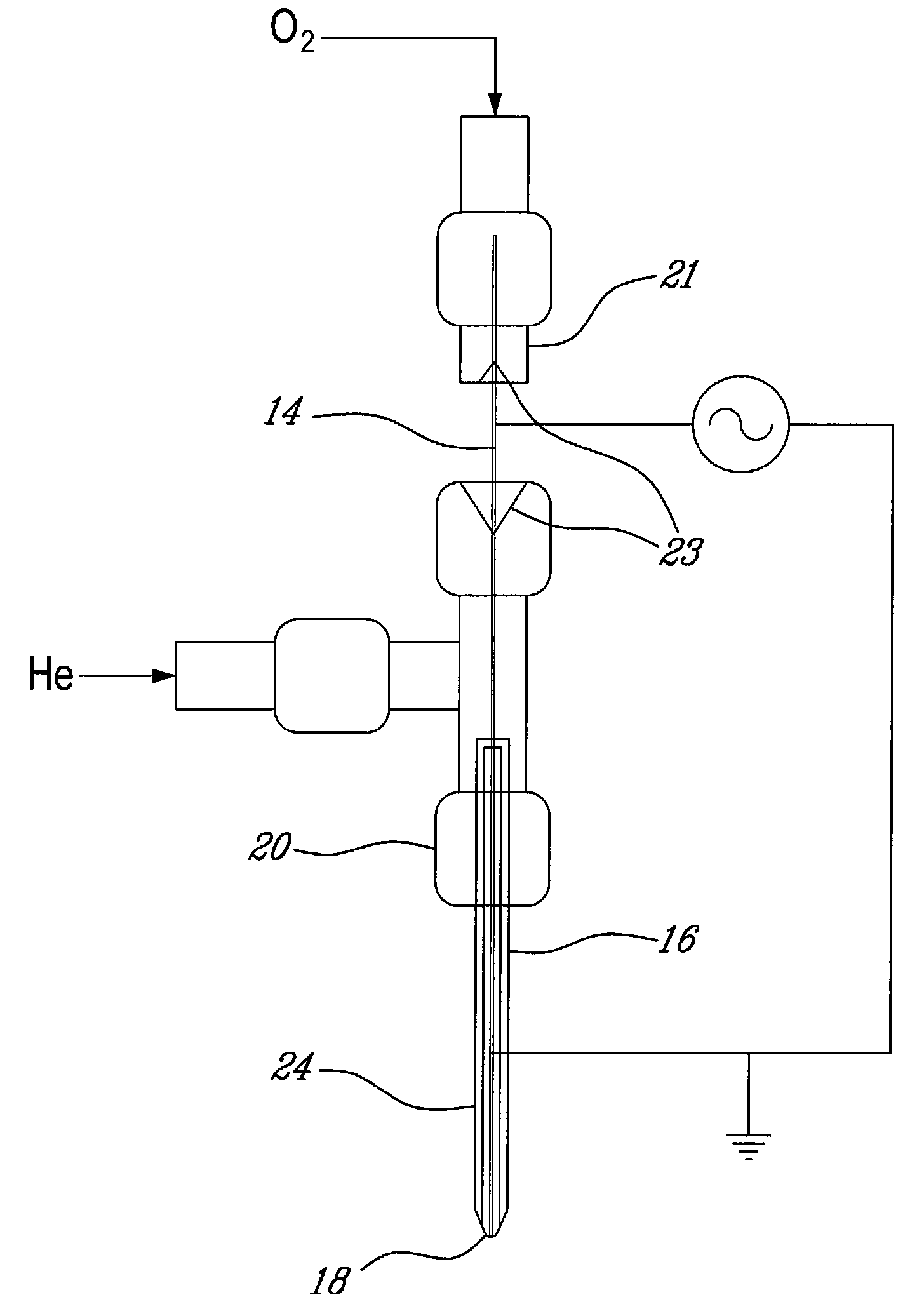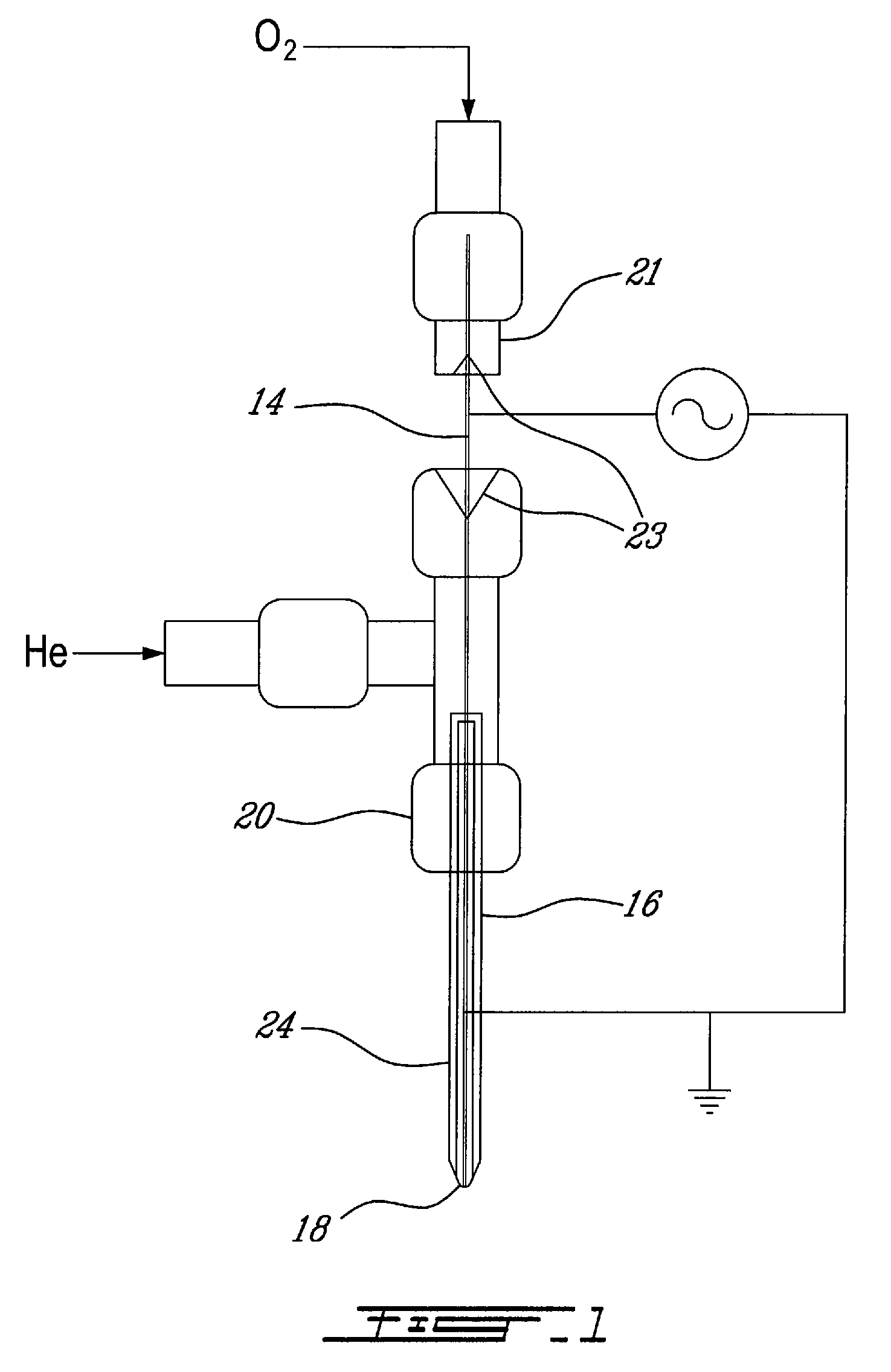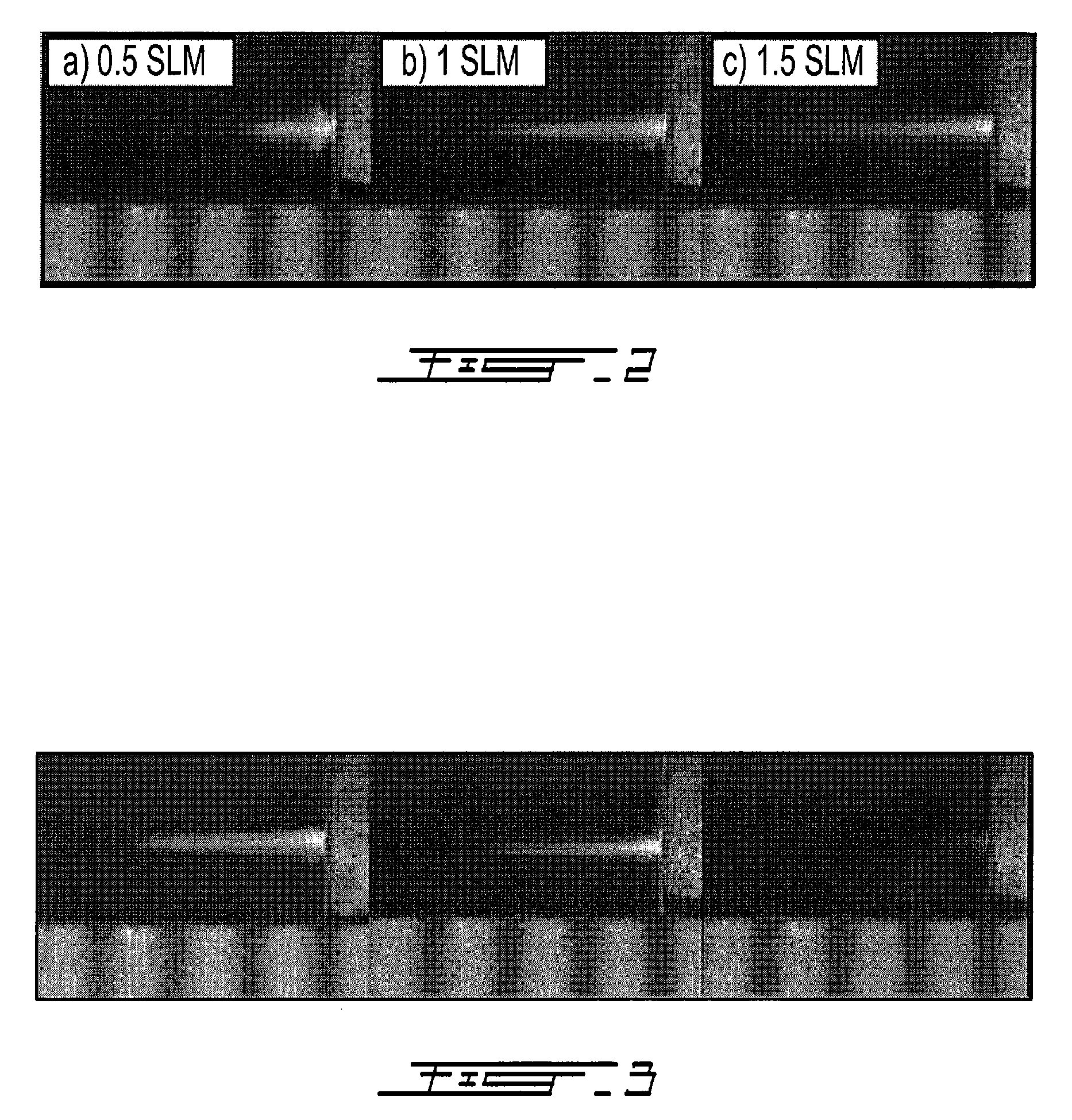Plasma source and applications thereof
a technology which is applied in the field of plasma source and plasma treatment, can solve the problems of rapid recombination of reactive species, source of contamination in cell culture, and difficulty in developing such plasma sources
- Summary
- Abstract
- Description
- Claims
- Application Information
AI Technical Summary
Benefits of technology
Problems solved by technology
Method used
Image
Examples
Embodiment Construction
[0039]FIG. 1 of the appended drawings illustrates a plasma source according to an embodiment of a first aspect of the present invention.
[0040] The source comprises a powered electrode 14 and a ground electrode 24.
[0041] The powered electrode 14 is a stainless steel capillary tube for example, with typical inside and outside diameters of 0.0070±0.0005″ (0.1778±0.0127 mm) and 0.0140±0.0005″ (0.3556±0.0127 mm), respectively. The small outside diameter of the powered electrode 14 allows for the local enhancement of the electric field and thus, a considerable reduction of the breakdown voltage requirement.
[0042] The powered electrode 14 is centered in a quartz confinement tube 16 acting as a dielectric barrier. Typically, the confinement tube 16 has an internal diameter of 2 mm, and an exterior diameter of 4 mm, and the downstream end of the tube is shaped into a converging nozzle 18 of an ending diameter of 500 μm or less for example. An electrically conductive layer, such as silver ...
PUM
 Login to View More
Login to View More Abstract
Description
Claims
Application Information
 Login to View More
Login to View More - R&D
- Intellectual Property
- Life Sciences
- Materials
- Tech Scout
- Unparalleled Data Quality
- Higher Quality Content
- 60% Fewer Hallucinations
Browse by: Latest US Patents, China's latest patents, Technical Efficacy Thesaurus, Application Domain, Technology Topic, Popular Technical Reports.
© 2025 PatSnap. All rights reserved.Legal|Privacy policy|Modern Slavery Act Transparency Statement|Sitemap|About US| Contact US: help@patsnap.com



